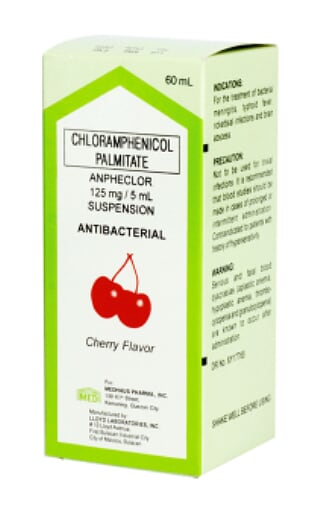Anpheclor (Chloramphenicol Palmitate)
Anpheclor (Chloramphenicol Palmitate)
Couldn't load pickup availability
Description: Chloramphenicol is an antibiotic useful for the treatment of a number of bacterial infections. This includes use as an eye ointment to treat conjunctivitis. By mouth or by injection into a vein, it is used to treat meningitis, plague, cholera, and typhoid fever. Its use by mouth or by injection is only recommended when safer antibiotics cannot be used. ![]()
Indication/Use: Used for meningitis, brain abscesses, rickettsial infections, and other illnesses that are resistant to conventional antibiotics include typhoid fever.
Dosage: 50 mg/kg divided in two for adults and kids every 6 hours, and 100 mg/kg in cases of severe infections brought on by moderately resistant microorganisms. Treatment time: Typhoid fever 8–10 days; rickettsial illnesses continue for 4 days after temperature returns to normal. Premature child >2 weeks Up to 50 mg/kg per day in 4 split doses. neonate, full-term & premature, 25 mg/kg daily.
Contraindication: Hypersensitivity or hazardous response history. Prophylaxis for a minor infection.
Special Precaution: Patients with a history of drug hypersensitivity or hazardous reaction should not use chloramphenicol (Anpheclor). Never should it be administered for prevention or mild infections. It is best to avoid lengthy treatments and repeated sessions. All patients should have routine, periodic blood tests, but they won't diagnose aplastic anemia. Chloramphenicol should never be administered to newborn newborns due to the possibility of the grey syndrome (Anpheclor). Unless there is no other available treatment and it could save a life. Chloramphenicol shouldn't be taken concurrently with medications that could lower bone marrow function.
Pregnancy & Lactation: Since chloramphenicol (Anpheclor) given to the mother is excreted in the milk, it is usually best avoided during pregnancy and in nursing mothers.
Content
Content
Share

